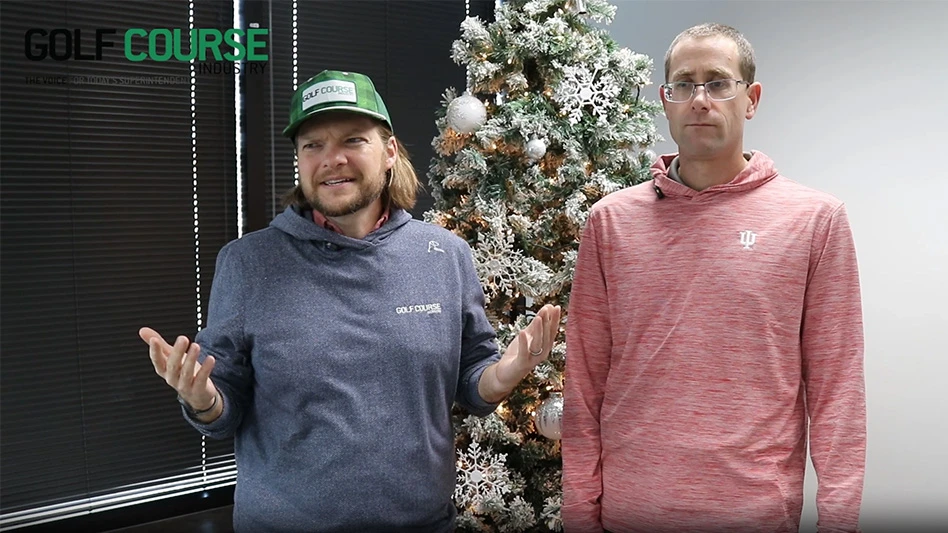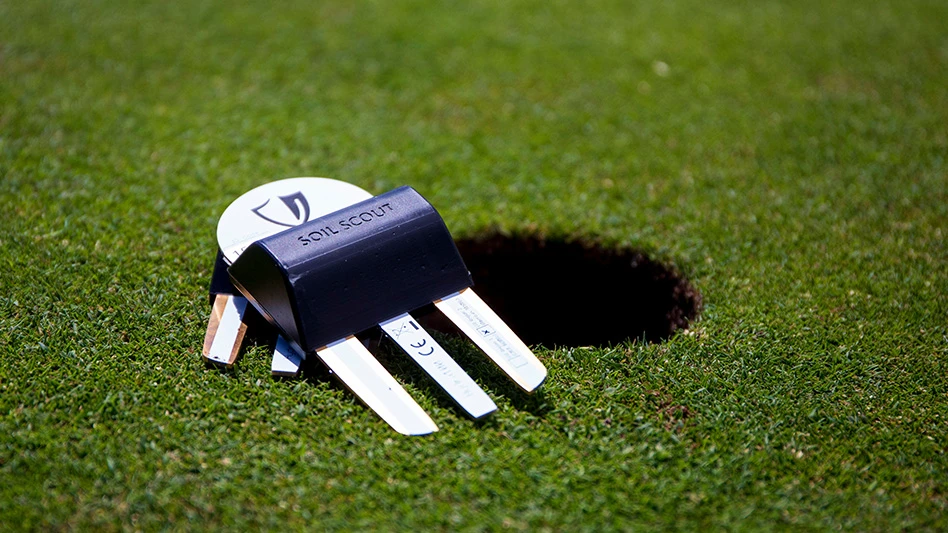
Adobe Stock
It is always a helpful tool of the trade to use numbers creatively. I found this out recently while presenting a bunker renovation plan to a club membership that was about to vote on the project.
As an introduction to a PowerPoint giving a few examples of the proposed changes, I told the audience that the goal was to have fewer bunkers, but larger ones, and that this would make them more conspicuous, in line with the original design. This would reduce overall maintenance because there would less area to maintain and less sand to supply or replenish while being easier to groom with a mechanical rake instead of hand raking.
“We’re going from 67 bunkers to 45,” I said. “Total area will shrink from 60,902 square feet (1.4 acres) to 55,684 square feet (1.28 acres). That’s an 8.5 percent reduction. But the average bunker size will go from 909 square feet to 1,237. That’s a 36 percent expansion per bunker.”
How about explaining to the crew or to your golfers why it’s crucial to maintain the perimeter of the green when mowing? It is amazing how imperceptibly, and yet how irreversibly, it becomes as a putting surface shrinks. Take a standard green, which we will make perfectly round to fit the standard geometric formula for area of πr2.
At a 44-foot, radius the green area measures 6,082 square feet. Now lose just 3 inches on the perimeter each year as the mower cheats so little no one even recognizes it. At the end of the fourth year, your green is down to a 43-foot radius and an area of 5,809 square feet – 4 percent smaller. After 20 years, the perimeter is down to 39 feet and the green measures 4,778 square feet – a 21 percent reduction. After 40 years, the putting surface, on radius of only 34 feet, measures 3,632 square feet and you have lost 40 percent of its entire area. That is about a 1 percent a year loss, all from 3 inches a year on the edge.
One of my favorite points to make while playing golf is explaining why golfers tend to miss putts by overreading the break. Superintendents will make friends for life with golfers by showing this during a round.
The inclination is to aim as far outside the hole as you expect the putt to curve on its path. But this overlooks the fact that the diameter of the hole, which is 4 1/4 inches across, includes the center point from which that break is measured. Technically then, the radius absorbs the first 2 1/8 inches of break. Not to get too geeky about it, we’ll call it 2 inches. So, when the caddie tells you the putt break a foot and indicates a spot a foot outside the hole, remind him, politely, that “the first 2 inches of break are inside the hole” and adjust your alignment accordingly. It might not matter much on 20-footers, but you don’t expect to make them anyway. On those all-crucial 5-footers, however, the minor adjustment could make a big difference.
The inclination is to aim as far outside the hole as you expect the putt to curve on its path. But this overlooks the fact that the diameter of the hole, which is 4 1/4 inches across, includes the center point from which that break is measured. Technically then, the radius absorbs the first 2 1/8 inches of break. Not to get too geeky about it, we’ll call it 2 inches. So, when the caddie tells you the putt break a foot and indicates a spot a foot outside the hole, remind him, politely, that “the first 2 inches of break are inside the hole” and adjust your alignment accordingly. It might not matter much on 20-footers, but you don’t expect to make them anyway. On those all-crucial 5-footers, however, the minor adjustment could make a big difference.
How about the incessant demand for faster greens – most of the time by mid-handicap golfers who never finish putting out their 3-foot come backers? One thing I have learned is that rational explanation has its limits. Still, it’s the superintendent’s obligation to try. Which is why it is worth explaining with the help of one of those multi-colored slope analysis charts that graph a green’s pitch from 0 to 10 percent, from safe green to fire engine red.
When only 20 percent of the entire putting surface of a vintage-age green is at 3 percent or under, finding cupping space becomes a delicate task, particularly at mowing heights approaching 1/10th of an inch when green speeds surpass 10 on the Stimpmeter. The simple point of geometry – or is it friction? – at that level is that the ball will not stop on a slope above 3 percent. That makes finding a fair (and level) spot to cut the hole a desperate search. It also produces worn out spots on the few areas of the green where cup-able space can be found. The result usually is a combination of limited setups, a feeling of unfairness when you get one of those unstoppable putts and frustration that ends up targeting the superintendent. Something must give.
Since it’s cheaper and easier to peel back on golfer expectations than to blow up the green and rebuild it, the most sensible thing is to limit green speeds – but only with the help of those flow charts.
Since it’s cheaper and easier to peel back on golfer expectations than to blow up the green and rebuild it, the most sensible thing is to limit green speeds – but only with the help of those flow charts.
The use of basic data presumes a willingness on the golfer’s part to accept rational explanation. All a superintendent can do is make a reasonable case with the evidence at hand. In that sense, basic math is a useful tool. Though by no means a guarantee.
Latest from Golf Course Industry
- GCSAA names Shelly Robbins as senior director
- Centennial moments
- Georgia GCSA names Superintendent of the Year
- Heart of America GCSA supports Col. John Morley Centennial Campaign
- LebanonTurf receives EPA registration for new combination product
- Reel Turf Techs: Toby Christoun
- Albaugh insecticide receives California registration
- Envu introducing new liquid fungicide at GCATS





